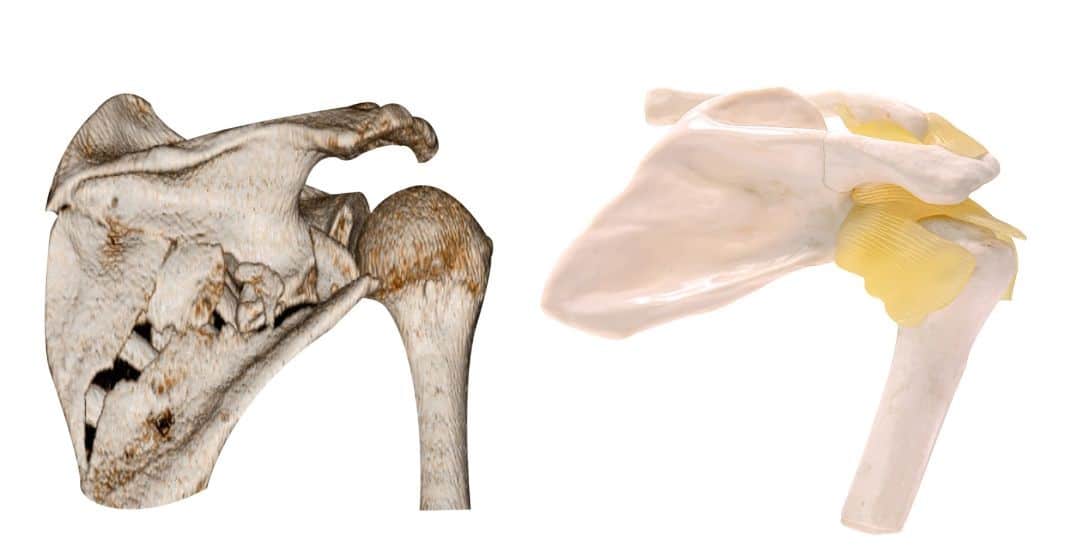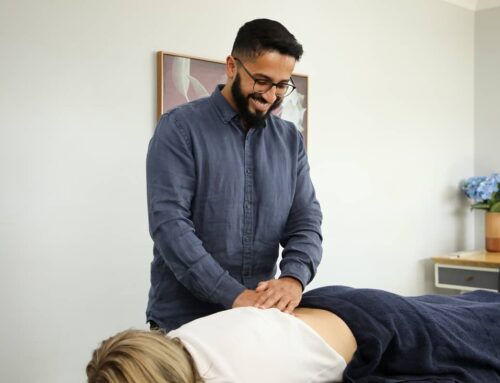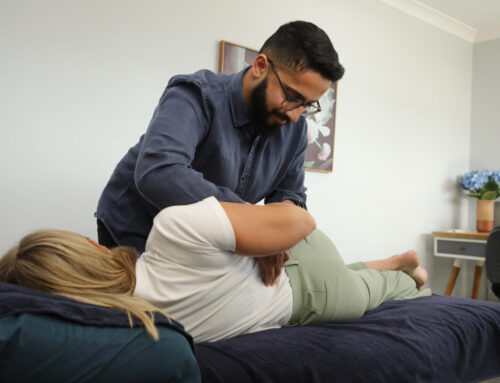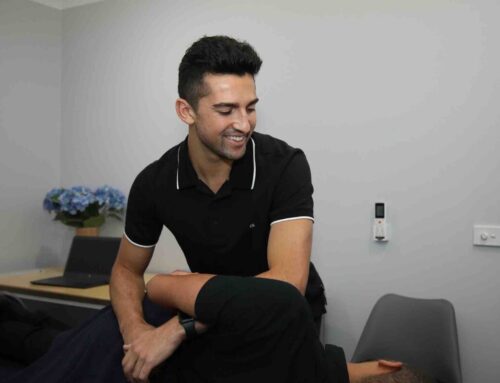Ever had that stubborn shoulder pain that just won’t quit? Or found that you simply can’t perform overhead tasks because your shoulder is too weak? Maybe the pain kicks in when you lift your arm to the side? It seems likely you’re suffering from a subacromial impingement, also sometimes referred to as shoulder impingement. Let’s understand what’s happening with your shoulder and, crucially, what the osteopaths at Pakenham Osteopathy can do to help.
Anatomy of the Shoulder
The glenohumeral joint (or shoulder joint to its friends) is quite the complex setup. The humerus (arm bone), scapula (shoulder blade) and clavicle (collar bone) all connect and move against each other – the humerus against the scapula via a little socket forming a ball-and-socket joint. The acromion, a bony projection of the scapula, forms the roof of the shoulder and, along with other bony parts provide a lot of hooks for shoulder muscle attachments – the muscles that help you do things like lifting, reaching, and throwing stuff. Beneath the acromion there’s space for tendons and bursa. It’s not a lot of space, especially when you lift your arm overhead, so things can easily get a bit squeezed in there. This causes compression and friction between the rotator cuff tendons and the undersurface of the acromion, leading to irritation, inflammation, and eventually pain. That pinch is what we mean when we talk about impingements.
Why Has This Happened?
Sports: Subacromial Impingement Syndrome (SAIS) often occurs in athletes or individuals involved in activities that require repetitive overhead movements. Athletes involved in sports like tennis, baseball, weightlifting, and swimming are therefore more likely to experience it.

Photo by Andrew Lomas on Unsplash
Occupational Factors: People whose occupations involve repetitive or prolonged overhead activities, such as painters, carpenters, or manual labourers, may also be at a higher risk of developing SAIS due to the constant strain on the shoulder joint.
Poor Posture and Muscle Imbalances: Individuals with poor posture or muscle imbalances around the shoulder area are more susceptible to developing impingement. Weakness or imbalance in the muscles that stabilise the shoulder blade, or the rotator cuff can contribute to improper movement mechanics, leading to impingement over time.
Bad Luck: Some people are born with a hooked acromion or narrowed subacromial space. This means they’re more likely to experience an impingement as there was less space there to begin with!
Age: As we age, changes in the structure of the shoulder, such as the formation of bone spurs or degeneration of tendons, can increase the risk of impingement.
What Can Be Done About It?
![]() Osteopathic management of SAIS involves a multifaceted approach addressing both the local shoulder problem and the body as a whole. We might employ soft tissue techniques, such as myofascial release and trigger point therapy, to alleviate muscular tension around the shoulder and use manipulation and mobilisation to enhance joint mobility, particularly targeting the glenohumeral joint itself and the spine in the neck and mid-back regions.
Osteopathic management of SAIS involves a multifaceted approach addressing both the local shoulder problem and the body as a whole. We might employ soft tissue techniques, such as myofascial release and trigger point therapy, to alleviate muscular tension around the shoulder and use manipulation and mobilisation to enhance joint mobility, particularly targeting the glenohumeral joint itself and the spine in the neck and mid-back regions.
But here’s the fascinating part: Sometimes, your shoulder’s grumpy because another part of your body isn’t playing nice. Dysfunction in the cervical spine (neck) can contribute to shoulder issues. In other words, your neck might be throwing a tantrum, affecting how your shoulder behaves just like siblings setting each other off! We call this the kinetic chain, and it means we need to be pain detectives and look at your body holistically rather than just treat the painful part.
We might also prescribe exercises to strengthen the stabilising muscles, a period of rest, or modifications to the movements that triggered the problem in the first place.
So, don’t despair. While shoulder impingement is painful and debilitating, the osteopaths at Pakenham Osteopathy are here to help.
Conclusion
Subacromial impingement syndrome is a complex, but common condition. It’s caused by repetitive overhead work, ageing, poor posture, and sometimes by our individual anatomy at birth. It’s complex because the anatomy of the shoulder is complex – it has to be to facilitate the incredible range of movement this joint is capable of! The osteopaths at Pakenham Osteopathy offer a comprehensive treatment approach to alleviate pain and restore mobility. Call us for an appointment today on 5941-4157 or book online here to get started on the road to recovery.





